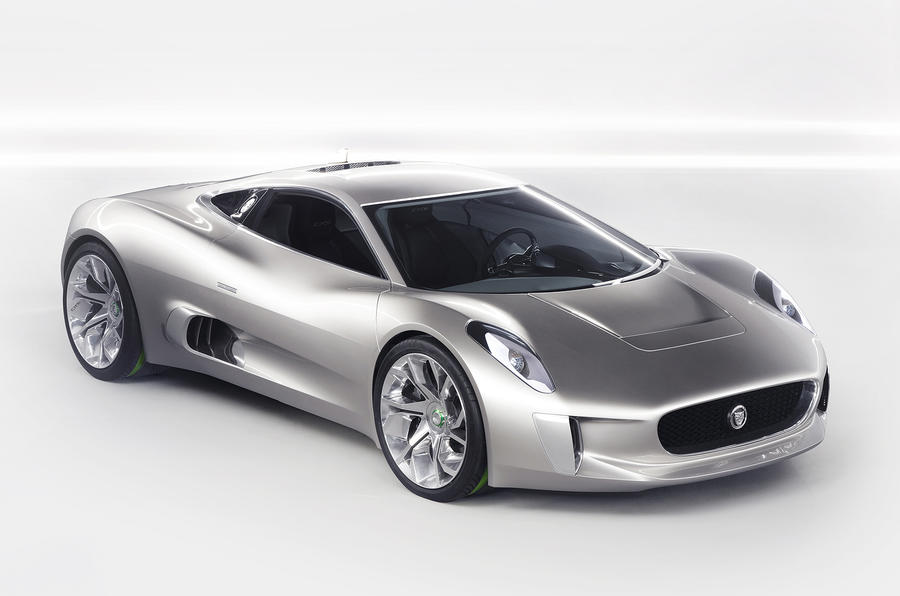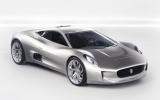Jaguar has made waves on the eve of the Paris motor show with a surprise ultra-low emissions supercar that could catapult it back into the rarefied market it left in 1994, when the 217mph XJ220 ended production.
The C-X75 pictured here has been unveiled to the world’s media at the Paris show’s press day today. Jaguar officially describes it as “a commemoration of 75 years of Jaguar heritage, and a glimpse at the design cues and technology that will characterise our cars in the future.”
But internally, as Autocar can reveal, Jaguar considers the car almost wholly realistic for production and it has ambitions to bring it to the road, relaunching Jaguar as a powerful, forward-looking force in the supercar world.
“With the current XK, XF and XJ, we’ve refreshed and enhanced the public’s perception of the Jaguar brand,” explained deputy design director Julian Thomson. “The time’s right for us to push on again. To make people aware that we can make an even more exotic and special kind of car — a true supercar that’s sustainable and future-proof, and that also combines performance, luxury and beauty in a way that only a Jaguar can.”
What makes the C-X75 particularly remarkable is its experimental powertrain. Powering this 4.6m-long, 205mph, two-seat berlinetta are four 195bhp electric motors, one at each wheel. They give a combined 780bhp and 1180lb ft of torque, and provide for zero-emissions running, dynamics-enhancing torque vectoring, and pace that even an XJ220 couldn’t match: 0-62mph in 3.4sec, 0-100mph in 5.5sec and 0-186mph in a Veyron-beating 15.7sec.
“The electric powertrain gave us total freedom to give the C-X75 absolutely perfect stance and proportion,” said Thomson. “In conventional supercars, you’re hampered by accommodating a large piston engine, but using four relatively small electric motors instead meant we could keep the car low to the ground and put the driver precisely in the middle of the wheelbase, right where you’d ideally like to be.”
Jaguar design chief Ian Callum is already on record with his view that this car is the most beautiful Jaguar that the company has ever produced — prettier, even, than the 1966 XJ13 prototype racer.
He said: “The C-X75 is as close to a pure art form as a concept car can get.” Its grille and headlights, and pure fuselage-like body surfaces, are also a clue towards the looks of Jaguar’s next XK, and its often-rumoured smaller sports car.
The C-X75 is no strict EV but a range-extended plug-in hybrid of an unprecedented sort. It has an electric-only range of 68 miles, but backing this up is a pair of miniature gas turbines mounted behind the cabin that could be run on diesel, biofuel, compressed natural gas or LPG.




























Join the debate
Add your comment
Re: Jaguar's shock new C-X75 supercar
I've read the interview on another site, and I think he says that this is like a successor to the XJ13, which he believed was the most beautiful Jaguar every produced. Think it's been misquoted slightly. Could be wrong though!
Re: Jaguar's shock new C-X75 supercar
Perhaps if he is talking about TATA then I agree - but there is no way in hell that it's more beautiful than an XK120 or a Series 1 E-Type.
It is striking but, as someone else said, there's no Jaguar DNA in there. Looks like a cross between a Spyker C8 & a Porsche 918 to me. I wish that car manufacturers would go back to having unique designing rather than everyone just copying each other. Starting to get a bid inbred now which is probably why the cars are slowly going cross-eyed with a big chin!!
Re: Jaguar's shock new C-X75 supercar
I don't have much to add to whats already been written but hats off to Jaguar, this is a fabulous concept.
I think there is potential in the gas turbine range extender idea but I'm interested to see how they deal with the exhaust heat. Volcanic rock for an insulator?
Styling in and out is beautiful but the front end is a bit weak; It could be from any marque of this type. I'd live with it though :-)